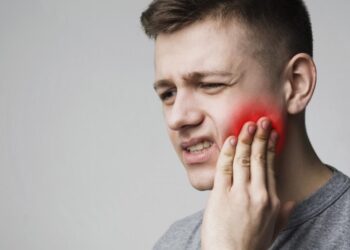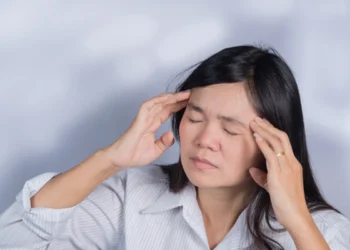Back pain is a common issue that affects many people, and one of the key contributors is muscle stiffness and tightness. While back pain can have various causes, stiff and tight muscles are among the leading culprits. These conditions can result in discomfort, reduced mobility, and even chronic pain if not addressed properly.
In this article, we’ll explore how muscle stiffness and tightness can lead to back pain, the factors that contribute to it, and how to relieve and prevent it.
What Causes Stiff and Tight Muscles?
Muscle stiffness and tightness occur when muscles become rigid or tense, limiting their flexibility and range of motion. This can happen for a variety of reasons, including:
- Poor Posture: Sitting or standing with improper posture can strain muscles, particularly in the lower back, leading to tightness and discomfort.
- Overuse or Strain: Repetitive activities, lifting heavy objects, or sudden movements can cause muscles to tighten up as a protective mechanism, often resulting in soreness and stiffness.
- Lack of Activity: A sedentary lifestyle can contribute to muscle stiffness, as muscles aren’t being used regularly or stretched, leading to tightness in the back and surrounding areas.
- Stress and Tension: Emotional stress can manifest physically in the body, particularly in the muscles. This can cause the muscles in the back to tense up, leading to discomfort and pain.
How Do Stiff and Tight Muscles Cause Back Pain?
When muscles in the back become tight or stiff, they can contribute to pain in several ways:
- Reduced Blood Flow and Oxygen: Tight muscles restrict blood flow to the affected area, reducing the amount of oxygen and nutrients delivered to the muscles. This can lead to muscle fatigue, soreness, and discomfort.
- Impaired Range of Motion: Stiff muscles have a limited range of motion, which can make it difficult to perform daily activities. This restricted movement places additional stress on the surrounding muscles and joints, which can exacerbate pain.
- Muscle Imbalance: Prolonged muscle tightness in certain areas can create imbalances between muscle groups. For example, tight hip flexors or hamstrings can affect the alignment of the spine, leading to additional stress on the lower back.
- Trigger Points: Tight muscles can develop “trigger points,” or knots, which are highly sensitive areas within a muscle. These trigger points can refer pain to other areas of the body, including the back, causing discomfort that seems to spread from one area to another.
- Nerve Compression: In some cases, stiff muscles can compress nerves in the back, particularly the sciatic nerve, leading to radiating pain that can travel down the legs (sciatica). This is often associated with tightness in the lower back and gluteal muscles.
Common Areas Affected by Muscle Tightness and Stiffness
Several areas of the body are prone to stiffness and tightness, especially in the back region:
- Lower Back: The lower back is a common area for muscle stiffness due to poor posture, lack of movement, or strain from lifting. Tightness in this area can lead to chronic discomfort and pain.
- Upper Back and Shoulders: Stress, poor posture, and long hours sitting at a desk can lead to tightness in the upper back and shoulders. This can result in tension headaches and discomfort that spreads down the spine.
- Neck: Stiff neck muscles can lead to pain in the upper back and shoulders. Tight neck muscles can also contribute to migraines or headaches that radiate through the back.
- Hip Flexors and Hamstrings: Tight hip flexors and hamstrings can contribute to lower back pain by affecting the alignment and posture of the pelvis and spine.
How to Relieve and Prevent Muscle Tightness and Back Pain

Relieving muscle stiffness and tightness in the back requires a combination of stretching, strengthening, and lifestyle changes. Here are some tips to help manage and prevent muscle-related back pain:
- Stretch Regularly: Incorporate stretches into your daily routine to improve flexibility and reduce muscle tightness. Focus on areas like the hamstrings, hip flexors, lower back, and shoulders to keep muscles relaxed and limber.
- Strengthen Core Muscles: A strong core supports the spine and helps prevent muscle strain in the back. Incorporate exercises like planks, bridges, and pelvic tilts to strengthen your core and improve posture.
- Improve Posture: Pay attention to your posture throughout the day, especially if you sit for long periods. Sit with your feet flat on the floor, shoulders back, and avoid slouching to reduce strain on the back muscles.
- Stay Active: Regular physical activity, such as walking, swimming, or yoga, can keep muscles flexible and prevent stiffness. Avoid sitting for long periods and take breaks to stand and stretch.
- Massage and Foam Rolling: Massage therapy and foam rolling can help release tight muscles and trigger points. These techniques improve blood flow, reduce muscle tightness, and relieve pain in the back.
- Heat and Cold Therapy: Applying heat or cold to the affected area can help reduce muscle tightness and pain. Heat therapy relaxes muscles, while cold therapy reduces inflammation and swelling.
- Manage Stress: Since stress can lead to muscle tension, try relaxation techniques like deep breathing, meditation, or yoga to help manage stress and prevent tight muscles.
When to Seek Medical Help for Back Pain
While muscle tightness and stiffness are common causes of back pain, persistent or severe pain may indicate a more serious underlying issue, such as a herniated disc or spinal condition. If your back pain is accompanied by symptoms such as numbness, tingling, weakness, or radiating pain down the legs, it’s important to consult with a healthcare professional for a proper diagnosis and treatment plan.
FAQ’s About Stiff and Tight Muscles Leading to Back Pain:
1. What causes muscle stiffness and tightness in the back?
Muscle stiffness can be caused by poor posture, overuse, lack of activity, or emotional stress, which all contribute to tension and discomfort in the back.
2. How do tight muscles result in back pain?
Tight muscles reduce flexibility, restrict blood flow, and may create imbalances, placing extra stress on the spine and contributing to pain.
3. What areas of the body are most affected by muscle tightness?
Common areas affected by tight muscles include the lower back, upper back, shoulders, neck, and hips, all of which can cause or worsen back pain.
4. How can I relieve tight muscles and prevent back pain?
Regular stretching, strengthening exercises, improving posture, staying active, and using heat or cold therapy can help relieve tight muscles and prevent back pain.
5. When should I see a doctor about back pain?
If your back pain persists, is severe, or is accompanied by numbness, tingling, or weakness, it’s important to seek medical attention for proper diagnosis and treatment.
Conclusion:
Stiff and tight muscles are a leading cause of back pain and can result from factors like poor posture, overuse, stress, and inactivity. Addressing muscle tightness through stretching, strengthening, proper posture, and stress management can help prevent and alleviate back pain. If your pain persists or worsens, it’s important to consult with a healthcare provider to rule out more serious conditions.By incorporating these strategies into your daily routine, you can keep your muscles flexible, reduce discomfort, and enjoy a more active and pain-free lifestyle.











